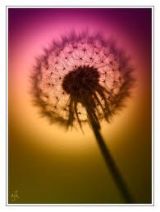- Forum
- General Discussion | Introductions | Off Topic Forum
- Photography General Discussion
- What's your white balance "technique"?
What's your white balance "technique"?
Post #95423
Do you set a custom white balance every time you shoot in a new environment/ have a change of light source, or do you just rely on one of your camera's presets?
-

- Johnnie
- Photography Hooked
-
- Canon 7D, Canon 20D, Fujifilm Finepix S1000fd
- Followers: 146
- Posts: 887
-
Points:
2
Post #95479
-

- S5m13
- New Kid On The Block
-
- Canon EOS Rebel T1i
- Followers: 47
- Posts: 42
-
Points:
0
-

- Nikonjan
- Master of the Lens
-
- Nikon D300
- Followers: 142
- Posts: 1566
-
Points:
0
Post #95543
www.betterphoto.com?nikonjan
-

- photobod
- Paparazzi
-
- Nikon D800 + D300
- Followers: 563
- Posts: 8907
-
Points:
150
Post #95615
www.dcimages.org.uk
"A good photograph is one that communicate a fact, touches the heart, leaves the viewer a changed person for having seen it. It is, in a word, effective." - Irving Penn
-

- Henry Peach
- Apprentice
-
- I currently use a 5DII or Sony Nex-3 most of the time.
- Followers: 50
- Posts: 2925
-
Points:
16
Post #95635
EDIT: It just occurred to me that sometimes I do use the flash WB setting. Auto WB sometimes looks a bit cool on the LCD when I use flash outdoors. If I'm shooting for myself I don't worry about it, as I'll just adjust in the raw processor, but if I am occasionally showing the subjects the LCD I switch it to get warmer color.
-

- Rawley Photos
- Photography Hooked
-
- D800
- Followers: 115
- Posts: 605
-
Points:
4832
Post #95739
-

- effron
- Newbie
- Followers: 1623
-
Points:
129640
- Forum
- General Discussion | Introductions | Off Topic Forum
- Photography General Discussion
- What's your white balance "technique"?
Latest Reviews
The Olympus Pen E-P7 is an affordable micro four thirds mirrorless camera with 4K video capabilities, a 20.3MP sensor, and 121 focus points, making it a solid entry-level camera for beginners.
The Panasonic G9 II is a 25.2-megapixel micro four thirds camera with numerous features that make it punch out of its weight class, like 779 AF points, 5.8K video, and weather sealing.
The Fujifilm XT5 is a 40MP mirrorless camera capable of 6.2K video at 30p. With those specs, it’s an ideal choice for photographers needing a camera to pull double duty for imaging and video.
The Canon EOS R100 is an entry-level mirrorless camera introduced in 2023. But just because it’s an entry-level camera doesn’t mean it’s a bare-bones camera. Find out why in this review!
Forum Top Posters
-
1Scotty 9 posts
-
2Ruby Grace 4 posts
-
3TCav 4 posts
-
4Roger Lang 3 posts
-
5Nefarious 3 posts
-
6Roman Omell 3 posts
-
7Jim Photo 3 posts
-
8CharleyL 3 posts
-
9ShutterPal 3 posts
-
10Pat White 3 posts
Latest Articles
Upgrade your kit in 2024 with the best intermediate camera on the market! The question is, what camera fits the bill? We’ve got three top options for you to choose from in this buyer’s guide.
The best photography jobs right now are a mix of tried-and-true gigs like wedding photography and new jobs highlighting AI’s capabilities, travel, and videography.
The Olympus Pen E-P7 is an affordable micro four thirds mirrorless camera with 4K video capabilities, a 20.3MP sensor, and 121 focus points, making it a solid entry-level camera for beginners.
Starting a photography business is one thing; sustaining your business over a long period of time is another. Use the tips in this professional photography guide to build something with longevity!
The Panasonic G9 II is a 25.2-megapixel micro four thirds camera with numerous features that make it punch out of its weight class, like 779 AF points, 5.8K video, and weather sealing.
Cinematic photography is an interesting genre that combines photographic and videographic skills along with effective storytelling techniques. The result? Highly impactful images!
Newborn photography requires skill, the right gear, and a lot of patience. This beginner’s guide discusses critical topics that will help you be more prepared for before, during, and after the shoot.
To fill the frame means to expand the footprint of the subject in your shot. Get in close, zoom in, crop the image, or use other techniques to bring the subject to the forefront.















